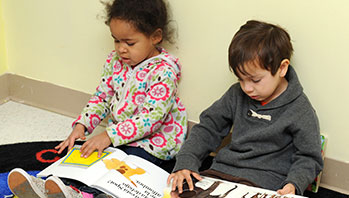- Vegetable Garden (book)
- grow
- harvested
- seasons
- plants
MA Standards:
English Language Arts/Literature/RL.PK.MA.4 With prompting and support, ask and answer questions about unfamiliar words in a story or poem read aloud.
English Language Arts/Literature/RL.PK.MA.6 With prompting and support, “read” the illustrations in a picture book by describing a character or place depicted, or by telling how a sequence of events unfolds.
Head Start Outcomes:
Literacy Knowledge/Book Appreciation and Knowledge Shows interest in shared reading experiences and looking at books independently.
Literacy Knowledge/Book Appreciation and Knowledge Asks and answers questions and makes comments about print materials.
PreK Learning Guidelines:
English Language Arts/Reading and Literature 6 Listen to a wide variety of age appropriate literature read aloud.
English Language Arts/Reading and Literature 10 Engage actively in read-aloud activities by asking questions, offering ideas, predicting or retelling important parts of a story or informational book.
One-on-One Reading: Vegetable Garden #4

© Commonwealth of Massachusetts, Department of Early Education and Care (Jennifer Waddell photographer). All rights reserved.
Skill Focus: Book Appreciation, Concepts of Print, Vocabulary
Read aloud the book Vegetable Garden by Douglas Florian to individuals or small groups.
Pause on each page to allow children to explore and talk about the illustrations and the words.
On each spread, help children make connections to their own life by asking questions about vegetables the family might or plants they planted. For example, ask:
- Have you ever aa garden or watched someone else plant a garden? What did you do?
- What happened to the seeds that were planted in the garden?
- What happened to the seeds that were planted? How did they grow and change.
Use the illustrations to talk about the tools (spade, rake, hoe, watering can, claw-like hand cultivator, hose, pitchfork) and vegetables.
Point out when the seeds are planted (spring), what helps them grow in the summer (rain, sun, etc.), and when they are harvested, or ready to be picked and eaten (fall). Relate the pumpkins, a vegetable we see in the fall, with the harvest time.
